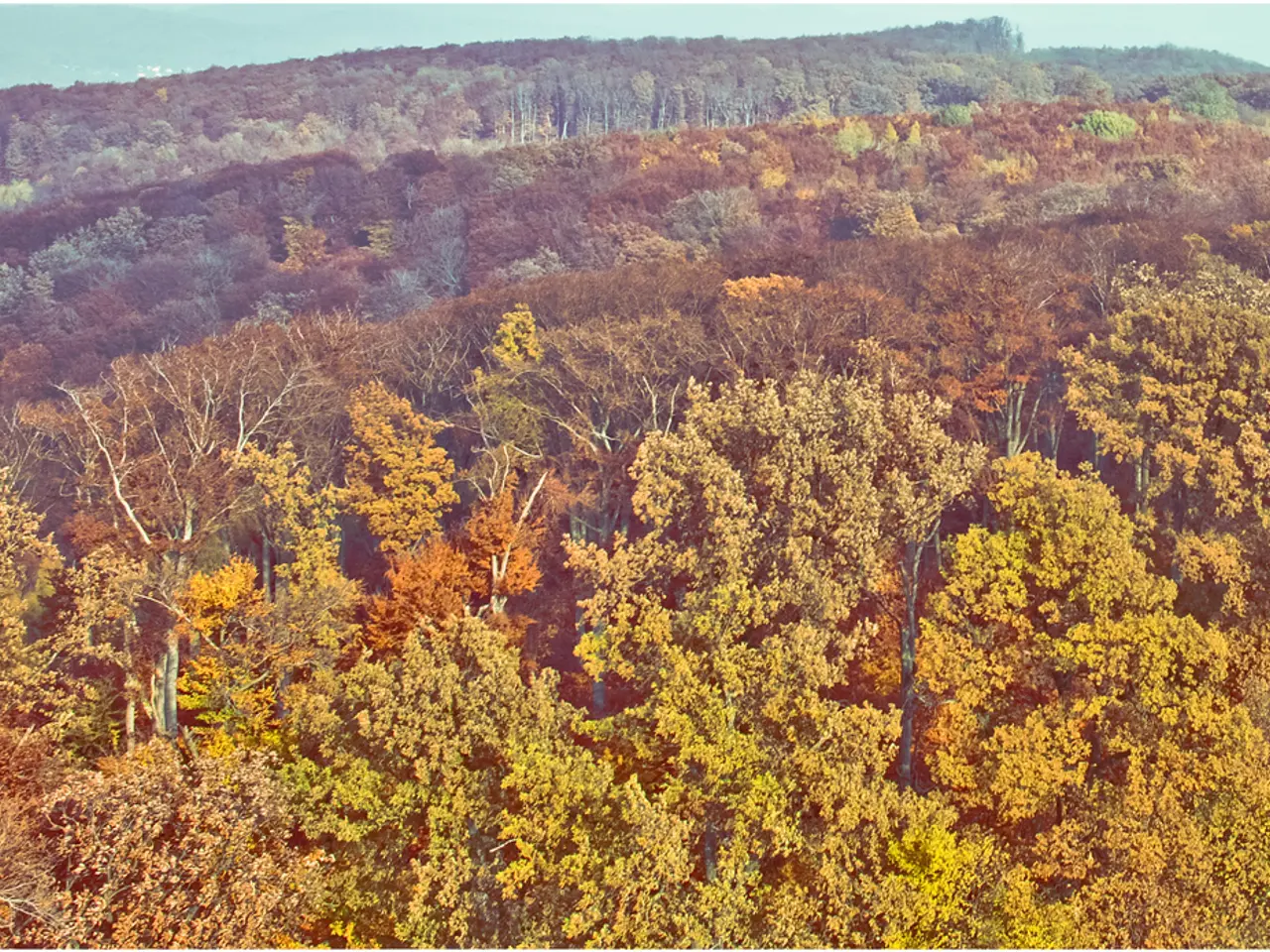The Demise of the Preeminent American Chestnut: A Fungus's Destructive Elimination of a Majestic Forest Species
The American chestnut tree, once a towering presence in the Appalachian forests, spanning from Maine to Georgia, covering nearly 200 million acres of woodland, has faced an unfortunate decline due to the chestnut blight fungus. This fungus, *Cryphonectria parasitica*, spread rapidly, infecting trees by entering through wounds in the bark and producing cankers that girdled the tree, cutting off nutrients and leading to its eventual death.
Efforts to resurrect the American chestnut have been underway for decades, with scientists and conservationists working tirelessly to develop blight-resistant trees. One such approach involves genetic engineering, with researchers at the State University of New York College of Environmental Science and Forestry (SUNY ESF) developing genetically modified (GM) American chestnut trees. These trees, known as "Darling 58," have shown significant resistance to the blight and can pass on this trait to future generations.
The USDA has initiated a review process for the genetically engineered Darling 54 chestnut tree, a variant of the Darling 58 line, finding it unlikely to pose a plant pest risk in a preliminary assessment. However, the process of getting genetically modified trees approved for release into the wild is complex, involving thorough environmental and safety assessments by regulatory bodies like the USDA, which can be time-consuming and may face public scrutiny.
Another approach to restoring American chestnuts involves traditional breeding programs, with organizations such as The American Chestnut Foundation (TACF) crossing American chestnuts with Chinese chestnuts, which are naturally resistant to the blight. This approach aims to enhance the resistance of American chestnuts over multiple generations.
While these efforts hold promise, there are challenges to overcome. Ensuring that the blight resistance engineered into the trees remains effective over time and is stable across different environmental conditions is a significant challenge. Additionally, the potential for unforeseen ecological impacts when introducing modified trees into forests inhabited by other species must be carefully evaluated.
Despite these challenges, the legacy of the American chestnut serves as a poignant reminder of the fragility of ecosystems and the impact of human actions on the environment. Public awareness and education about the American chestnut and its plight are vital for garnering support for restoration initiatives. Public involvement can aid in monitoring and maintaining newly planted trees, ensuring their survival and growth.
The story of the chestnut blight also underscores the importance of preventing the introduction of invasive species and the need for vigilant stewardship of natural resources. Supporting conservation efforts, advocating for responsible environmental policies, and educating future generations are crucial steps in safeguarding our natural heritage.
References: [1] https://acf.org/ [2] https://www.suny.edu/ [3] https://www.usda.gov/ [4] https://www.nature.com/ [5] https://www.usda.gov/
- The decline of the American chestnut tree, once prevalent in Appalachian forests, raises concerns about biodiversity and wildlife, given its role in ecosystems.
- Scientists and conservationists, including those at the State University of New York College of Environmental Science and Forestry, are striving to conserve the American chestnut through research and science, seeking to develop blight-resistant trees.
- Through genetic engineering, they have developed genetically modified (GM) American chestnut trees, such as the "Darling 58" variant, which exhibit significant resistance to the chestnut blight fungus.
- Education and self-development play a vital role in the conservation narrative, with the American Chestnut Foundation educating the public about the American chestnut and its plight, encouraging support for restoration initiatives.
- Climate change and environmental science suggest that preventing the introduction of invasive species and practicing responsible stewardship of natural resources are essential for preserving ecosystem health-and-wellness, fitness-and-exercise, and personal-growth.
- To safeguard our natural heritage, it is crucial to advocate for environmental policies, support conservation efforts, and continue learning about ecosystems and the impact of human actions on them.




